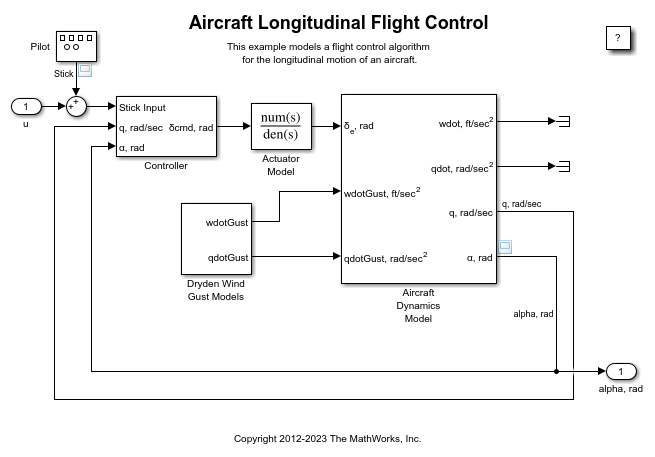Band-Limited White Noise
在连续系统中引入白噪声
库:
Simulink /
Sources
描述
Band-Limited White Noise 模块生成适合在连续系统或混合系统中使用的正态分布随机数。
白噪声仿真
从理论上讲,连续白噪声的相关时间为 0,功率谱密度 (PSD) 呈水平状态,总能量为无穷大。在实践中,物理系统永远不受白噪声干扰,尽管当噪声干扰的相关时间相对于系统的自然带宽非常小时,白噪声是很有用的理论逼近。
在 Simulink® 软件中,您可以使用相关时间比系统的最短时间常数小很多的随机序列来仿真白噪声的作用。Band-Limited White Noise 模块就生成这样的序列。噪声的相关时间是指模块的采样率。要进行准确的仿真,请使用比系统的最快动态小很多的相关时间。您可以通过指定以下方程来获得满意的结果:
其中 fmax 是以弧度/秒为单位的系统带宽。
与 Random Number 模块的比较
此模块与 Random Number 模块之间的主要区别在于,Band-Limited White Noise 模块以特定的采样率生成输出。此采样率与噪声的相关时间有关。
与 Averaging Power Spectral Density 模块一起使用
Band-Limited White Noise 模块指定双边频谱,其单位为赫兹。Averaging Power Spectral Density 模块指定单边频谱,其单位为每单位径向频率幅值的平方:mag^2/(rad/sec)。当您将 Band-Limited White Noise 模块的输出馈入 Averaging Power Spectral Density 模块时,平均 PSD 值比 Band-Limited White Noise 模块的噪声功率小 π 倍。这种差异是模块之间的单位转换造成的,即 1/(1/2)(2π) = 1/π,其中:
1/2 是从双边频谱转换为单边频谱的因子。
2
π是从赫兹转换为弧度/秒的因子。
示例
端口
输出
参数
模块特性
数据类型 |
|
直接馈通 |
|
多维信号 |
|
可变大小信号 |
|
过零检测 |
|
算法
要为此噪声生成正确的强度,需要对噪声的协方差进行缩放,以反映从连续 PSD 向离散噪声协方差的隐式转换。合适的缩放因子为 1/tc,其中 tc 是噪声的相关时间。这种缩放可以确保连续系统对近似白噪声的响应与系统对真实白噪声的响应具有相同的协方差。这种缩放导致 Band-Limited White Noise 模块的信号协方差与噪声功率(强度)参数不相同。此参数实际上是白噪声的 PSD 高度。此模块将白噪声的协方差近似为噪声功率除以 tc。
扩展功能
版本历史记录
在 R2006a 之前推出
